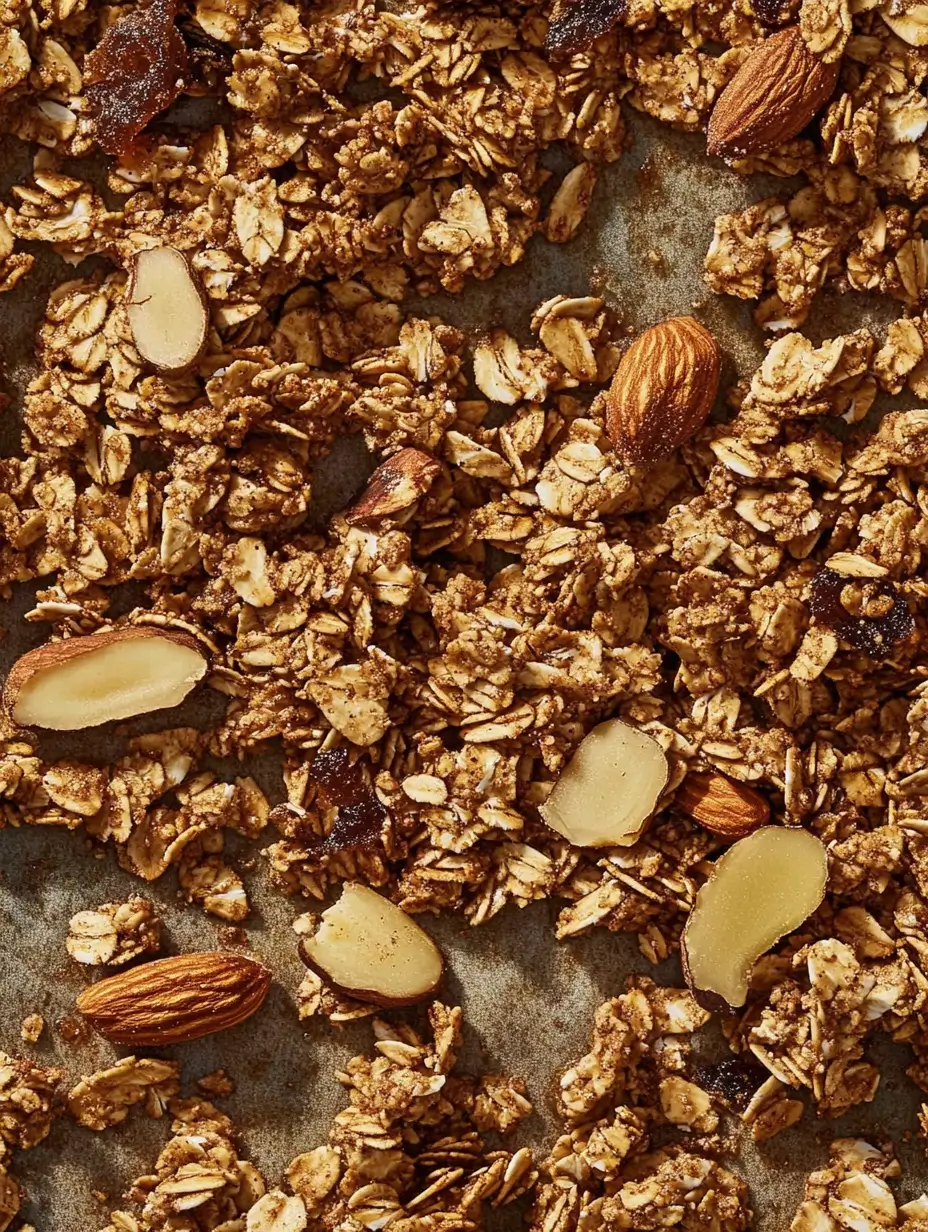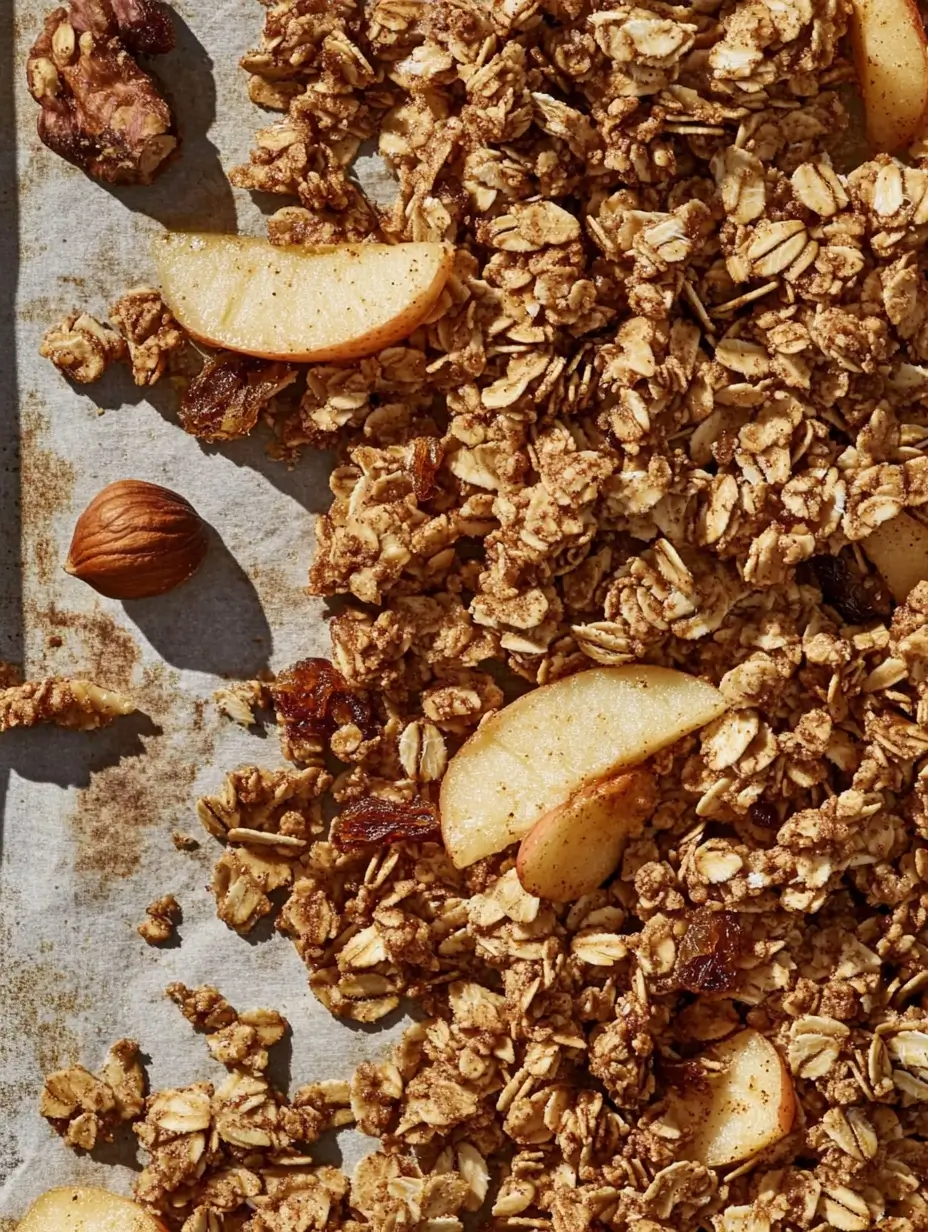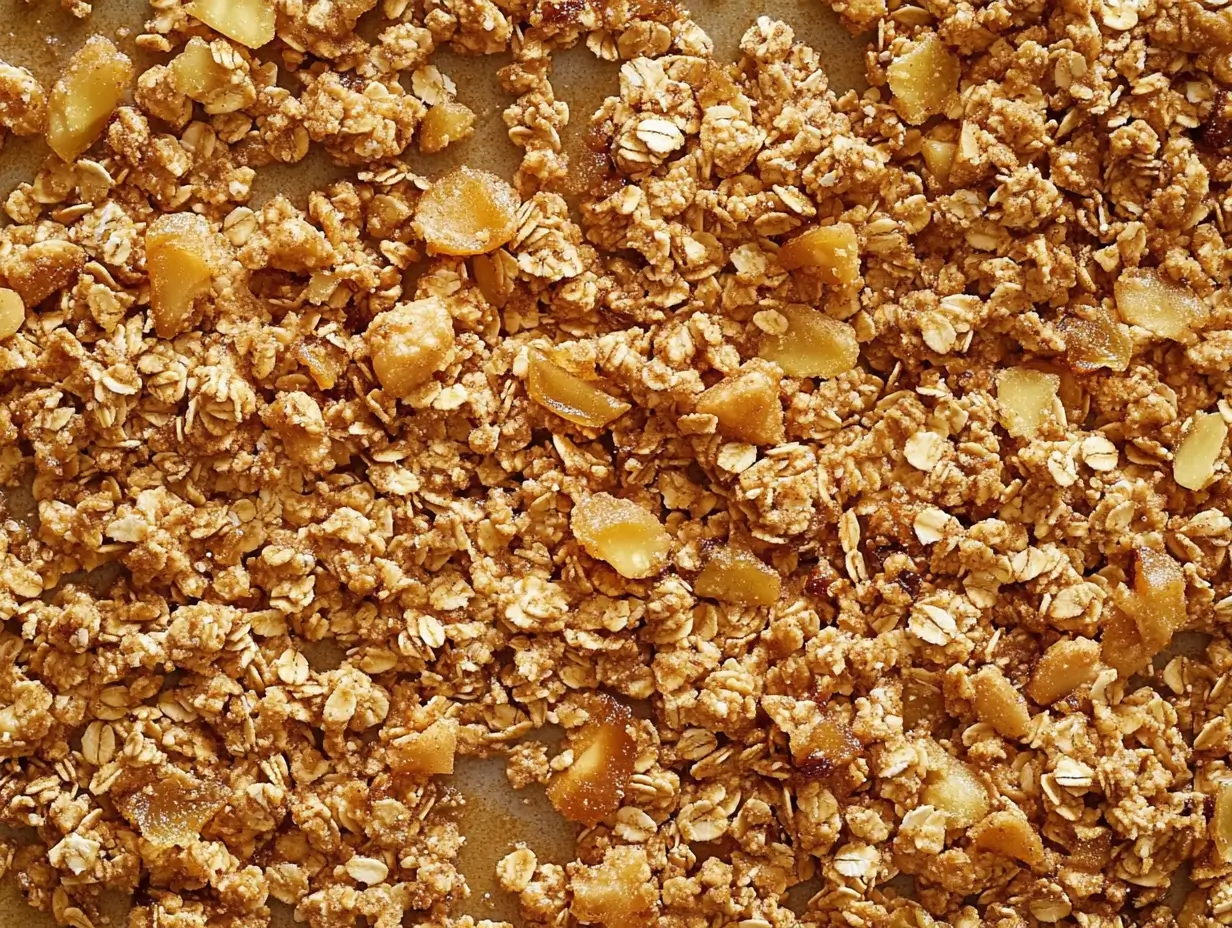Granola, a beloved snack and breakfast option, owes its delicious crunch and cohesive texture to specific ingredients that act as binders. This article unpacks the secrets behind what keeps granola clumped together, ensuring it doesn’t crumble into chaos. From natural sweeteners to innovative alternatives, we’ll discuss the ingredients and techniques that hold this healthy treat together.
Introduction to Granola Binding Agents
Granola isn’t just a mixture of oats, nuts, and dried fruits; it’s a symphony of ingredients working in harmony. But what’s the key to ensuring your granola sticks together? The answer lies in binding agents, the unsung heroes of every granola recipe. These ingredients provide the adhesive quality that transforms a mix of crunchy bits into cohesive clusters.
What Makes Granola Stick Together?
Granola’s ability to form those delightful clumps we all love comes down to two crucial factors: moisture and adhesiveness. So, what ingredient makes granola stick together? Natural binders like honey, nut butter, and mashed bananas are the key players, providing the sticky consistency that holds the mix together during baking or chilling. Without these, granola risks turning into a pile of loose, unmanageable crumbs.

The Role of Moisture in What Makes Granola Stick Together
Moisture is the secret weapon behind granola’s stickiness. Liquid binders such as honey, maple syrup, or even melted coconut oil serve a dual purpose. First, they add the necessary moisture to the mixture, allowing dry ingredients like oats and nuts to adhere. Second, during baking, these liquids caramelize, turning sticky and thick, which locks the granola into those satisfying clusters.
Adding too little liquid can leave the granola crumbly and dry, while too much can make it overly wet and sticky. Striking the right balance is key, and that often depends on the type of binder you choose. For instance, honey is denser and stickier than maple syrup, so you might need less of it. Similarly, a combination of coconut oil and a sweetener creates a luxurious texture that helps everything stick without being overly sweet.
How Adhesiveness Holds Granola Together
Adhesiveness comes from specific ingredients that act like glue. Sticky sweeteners, such as honey and agave syrup, are commonly used for this purpose because they naturally cling to dry ingredients. Nut butter, like almond or peanut butter, brings an additional layer of adhesion due to its creamy texture and fat content. These binders not only hold everything together but also add depth of flavor and nutritional benefits.
For a healthier twist, you can opt for plant-based binders like chia seeds or flaxseeds. When mixed with water, these seeds form a gel-like substance that mimics the stickiness of traditional binders. This is particularly useful for vegan or sugar-free granola recipes, where finding natural adhesion is crucial.
Baking Techniques for Better Granola Binding Results
While the choice of binder plays a significant role, baking techniques also influence how well granola sticks together. Low and slow baking at a temperature around 300°F (150°C) is ideal. This allows the binders to fully activate without burning. Spreading the granola in an even layer and pressing it down firmly before baking helps maximize contact between the ingredients, which encourages clumping.
Another trick? Avoid stirring the granola during baking if you want larger clusters. Stirring breaks apart the adhesive bonds that form as the sweeteners and oils caramelize. Let the granola cool completely after baking, as this is when the clusters harden and solidify.
Importance of Ingredient Ratios in Granola Clumping Success
Finding the right ratio of wet to dry ingredients is another important factor. Typically, a ratio of about one part liquid binder to three parts dry ingredients works well for creating cohesive granola. This guarantee that every oat, nut, or seed is coated enough to stick without becoming overly saturated. Experimenting with ratios can help you achieve the clump size and texture you prefer.
For example, if you love large, chunky clusters, use slightly more binder and compress the mixture firmly into the baking sheet. On the other hand, if you prefer a looser, crumbly texture, use less binder and stir the granola during baking.
Natural Variations for Creative Clusters
If you’re looking to get creative, try experimenting with unconventional binders. Mashed bananas or applesauce can act as a natural adhesive while adding a hint of fruity sweetness. These options are great for those seeking lower-sugar alternatives. Similarly, tahini or sunflower seed butter offers a nut-free option with a rich, earthy flavor.
Whether you stick to the classics or try something new, understanding what ingredient makes granola stick together helps you craft the perfect granola for your tastes. By combining the right ingredients, mastering techniques, and experimenting with ratios, you’ll always end up with clusters worth savoring.
Overview of Common Granola Ingredients
The foundation of any good granola includes rolled oats, nuts, and seeds. While these offer the crunch, they need support from liquid binders like honey, maple syrup, or even coconut oil to stick together. Sweeteners not only bind but also caramelize during baking, adding flavor and texture. For a healthier twist, natural binders such as chia seeds or flaxseeds can also do the trick, doubling as nutritional powerhouses.
Granola’s ability to clump isn’t just about the ingredients—it’s about how you use them. In the next section, we’ll explain the role of sweeteners in ensuring granola sticks together, offering both flavor and functionality.
Role of Sweeteners in Granola Binding

Sweeteners are one of the most crucial answers to what ingredient makes granola stick together. They not only add a delightful touch of sweetness but also provide the necessary stickiness to hold all the components in place.
How Honey Acts as a Natural Glue
Honey is often called nature’s glue in granola recipes. Its thick, sticky consistency makes it perfect for binding oats, nuts, and seeds. When heated during baking, honey caramelizes, creating a crispy texture while keeping granola clusters intact. It also adds a mild floral note to your snack. For those looking for a natural and minimally processed option, honey remains a top choice.
Maple Syrup and Other Liquid Sweeteners
Maple syrup is another fantastic liquid sweetener that works wonders in granola. Its slightly thinner consistency makes it easy to mix, while its deep, earthy flavor adds richness to the recipe. Other sweeteners like agave syrup, molasses, or brown rice syrup can also step in as effective binders, each offering a unique flavor profile. The key is to use enough sweetener to coat the dry ingredients evenly, ensuring every piece is slightly sticky before baking.
Sweeteners don’t just help granola stick; they’re essential for creating that golden-brown, irresistible texture. But what if you want to skip the sugar? In the next part, we’ll review non-sugar-based alternatives to keep your granola clumped without compromising its health benefits.
Non-Sugar-Based Binding Alternatives
For those asking, what ingredient makes granola stick together without using sugar, there are plenty of creative, healthier options. These alternatives cater to health-conscious individuals or anyone experimenting with unique flavors.
Using Nut Butter as a Binder
Nut butters like almond butter, peanut butter, or cashew butter are excellent for binding granola. Packed with healthy fats and proteins, these creamy spreads add a velvety texture and a nutty depth of flavor. When mixed with oats and seeds, nut butter forms a cohesive mixture that stays intact even after baking. For best results, warm the nut butter slightly before combining it with the dry ingredients—it’ll distribute more evenly.
Chia Seeds and Other Absorbent Ingredients
Chia seeds, tiny as they may be, pack a powerful binding punch. When soaked in water, they expand and form a gel-like consistency that works like an adhesive. This is especially helpful for those aiming for vegan or sugar-free granola recipes. Similarly, flaxseeds, when ground and mixed with water, create a sticky substance known as “flax egg,” which serves as an effective binder.
Role of Coconut Oil and Fats in Binding
Coconut oil is another unsung hero in granola making. Its liquid form coats the ingredients, helping them stick together. Once cooled, it solidifies, locking the granola clusters into place. Other healthy fat sources, like olive oil or ghee, can also contribute to binding while adding a hint of richness to the flavor.
Non-sugar binding agents not only hold granola together but also add unique textures and nutritional benefits. By trying these alternatives, you can create granola that’s both tasty and tailored to your dietary needs.
Techniques for Ensuring Granola Sticks Together
Granola that crumbles can be frustrating, but mastering a few simple techniques guarantees your granola forms satisfying clusters.
The Role of Heat in Activating Binders
Heat plays a vital role in answering what ingredient makes granola stick together. Sweeteners like honey and maple syrup caramelize under heat, becoming thicker and stickier. This process binds the dry ingredients into cohesive clusters. Baking at a low temperature, typically around 300°F (150°C), gives the binders time to activate without burning. Stirring midway is optional if you prefer looser granola, but for clumps, avoid mixing during the bake.
Tips for Mixing and Compressing Granola Mixtures
How you mix and prepare your granola impacts its final texture. After combining wet and dry ingredients, press the mixture firmly into the baking sheet. A spatula or the back of a spoon works well for this. Compression ensures the binder coats every element, which helps form tight clusters. Once baked, let the granola cool completely before breaking it apart to avoid premature crumbling.
For more delicious recipes and ideas, check out this vanilla nut granola recipe for inspiration!
Factors Affecting Granola Clumpiness
Granola clumpiness doesn’t rely on binders alone; other factors like ingredient proportions and storage also play a part.
Humidity and Storage Considerations
Humidity is a silent saboteur of granola texture. Too much moisture in the air or ingredients can make granola soggy, preventing it from forming clusters. Store granola in an airtight container to keep it crunchy and clumped. Additionally, refrigerating granola can help extend its shelf life while preserving its texture.
Ingredient Proportions and Ratios
Getting the right balance between wet and dry ingredients is critical when exploring what ingredient makes granola stick together. Too little binder results in loose granola, while too much creates a sticky mess. A general rule of thumb is one part binder (like honey or coconut oil) to three parts dry ingredients (like oats and nuts). Experimenting with this ratio allows you to adjust granola according to your preference for clump size and sweetness.
Recipes and Tips for Experimenting
Granola is a versatile snack, and experimenting with ingredients allows you to craft a recipe that suits your taste and nutritional needs.
Customizing Your Granola with Creative Binders
One of the best things about making granola at home is the freedom to customize. While honey and maple syrup are classics, why not try unconventional binders? Mashed bananas, for instance, add natural sweetness and act as a glue for the mixture. Applesauce is another excellent option, offering a light fruit flavor while reducing the need for additional fats or sweeteners.
Mistakes to Avoid When Making Granola
Experimentation is fun, but avoiding common pitfalls will result in better outcomes. Using too little binder can leave your granola dry and crumbly, while overloading on sweeteners might make it overly sticky. Measure ingredients carefully to strike the perfect balance. Another tip? Avoid adding dried fruits before baking—they can harden or burn. Instead, mix them in after baking for a chewy, flavorful finish.
By trying new ingredients and techniques, you can create granola that’s uniquely yours, whether it’s clumpy and sweet or light and crisp. Ready to get started? Put these ideas into action and enjoy your perfectly sticky, delicious granola!

